With a historic season that will almost certainly see the club claim its first Serie A title in over 30 years, Napoli has people across the city ready to celebrate in legendary fashion.
It’s a late Sunday morning in Naples, and here, just as they are across Italy, rituals are important.
Parents walk their young children around a miniature-sized park, an oasis from the constant honking and roaring of scooters careering down cobbled streets. Wizened men sit outside bars with cigarettes hanging from their lips, cards in one hand, espressos in the other. A nonna leans out of the window of her living room that spills out onto the narrow street — the street is part of her home, her home part of the street.
There is something a little different about this particular Sunday though. It’s Palm Sunday, the Christian celebration that precedes Easter, meaning the churches and surrounding streets of this densely populated neighborhood are even busier than usual. Processions shuffle their way past the usual Sunday crowds, and practically everyone is holding an olive branch.
Palm Sunday celebrates the entry of Jesus Christ into Jerusalem. According to the Bible, locals greeted his arrival by waving palm branches and placing them at his feet. Palm branches are said to represent goodness and victory, which links in neatly with the other religious event taking place on this particular Sunday: calcio, more specifically S.S.C Napoli.
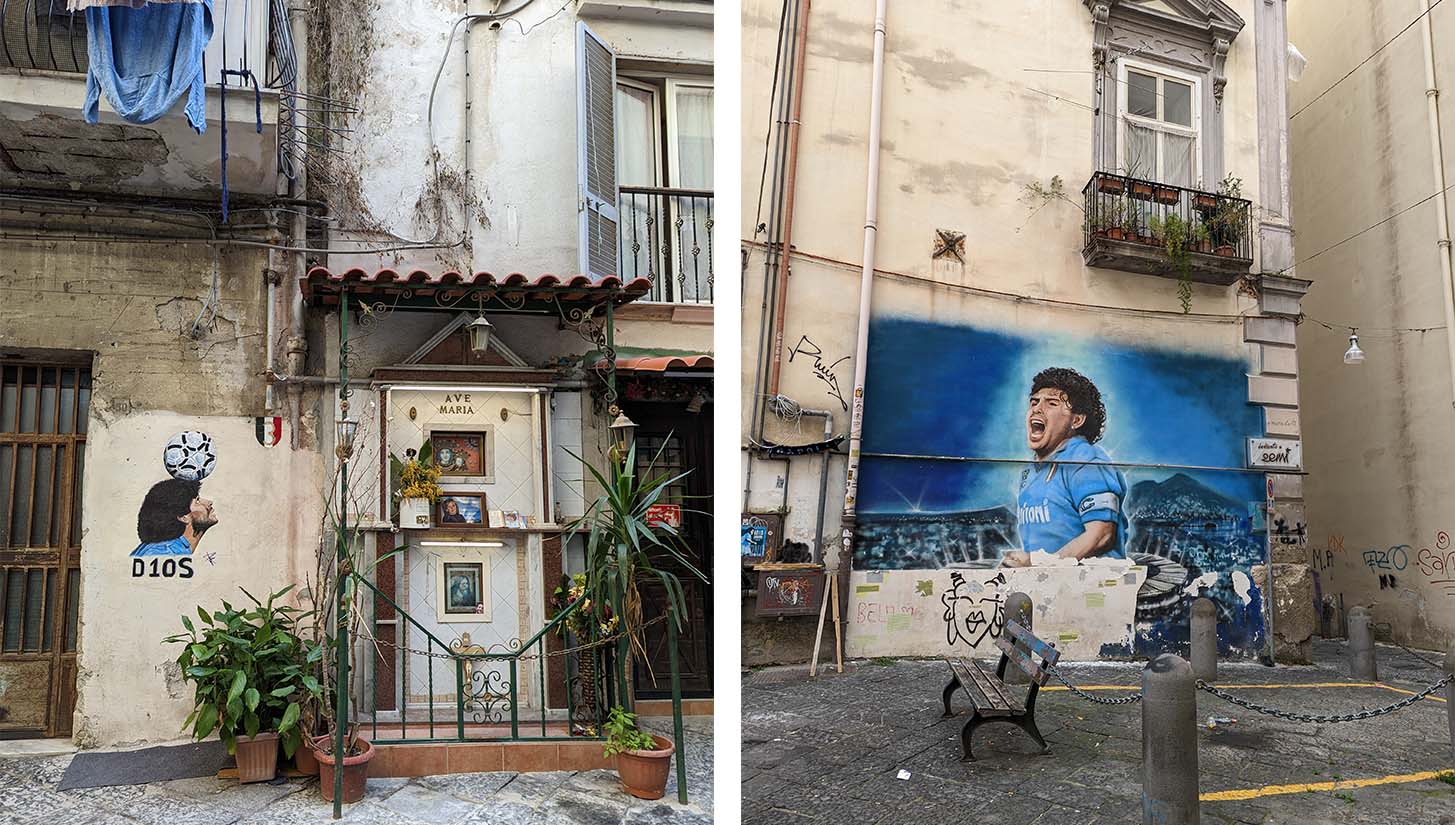
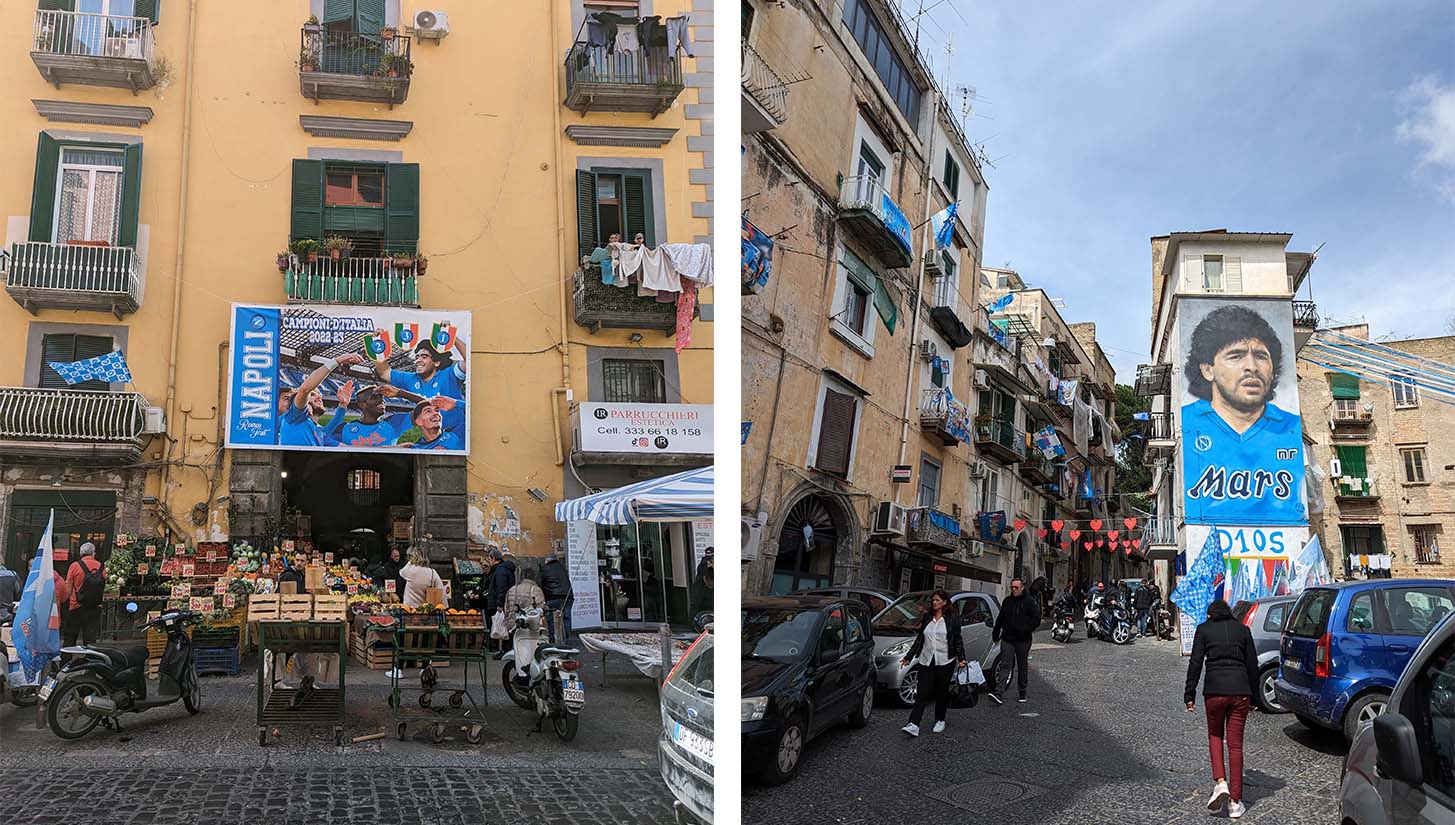
Napoli are far and away clear at the top of Serie A, cruising to a first Scudetto triumph in 33 years. The last time the club was crowned champions of Italy in 1990, it was another son of God — a demigod to many — who brought unbridled joy to a people accustomed to hardship and strife. Shrines to Diego Armando Maradona cover this city. It’s the way Neapolitans choose to not only honor their savior, but also remember the happier times.
The good times are about to return though, and with the clock ticking down to Napoli’s confirmation as champions, Naples is gearing up for the party of the century. The murals and iconography of the Quartieri Spagnoli, Naples’ Spanish quarter, are well documented, but it’s in another chaotic working-class neighborhood, Rione Sanità, where things have gone into overdrive.
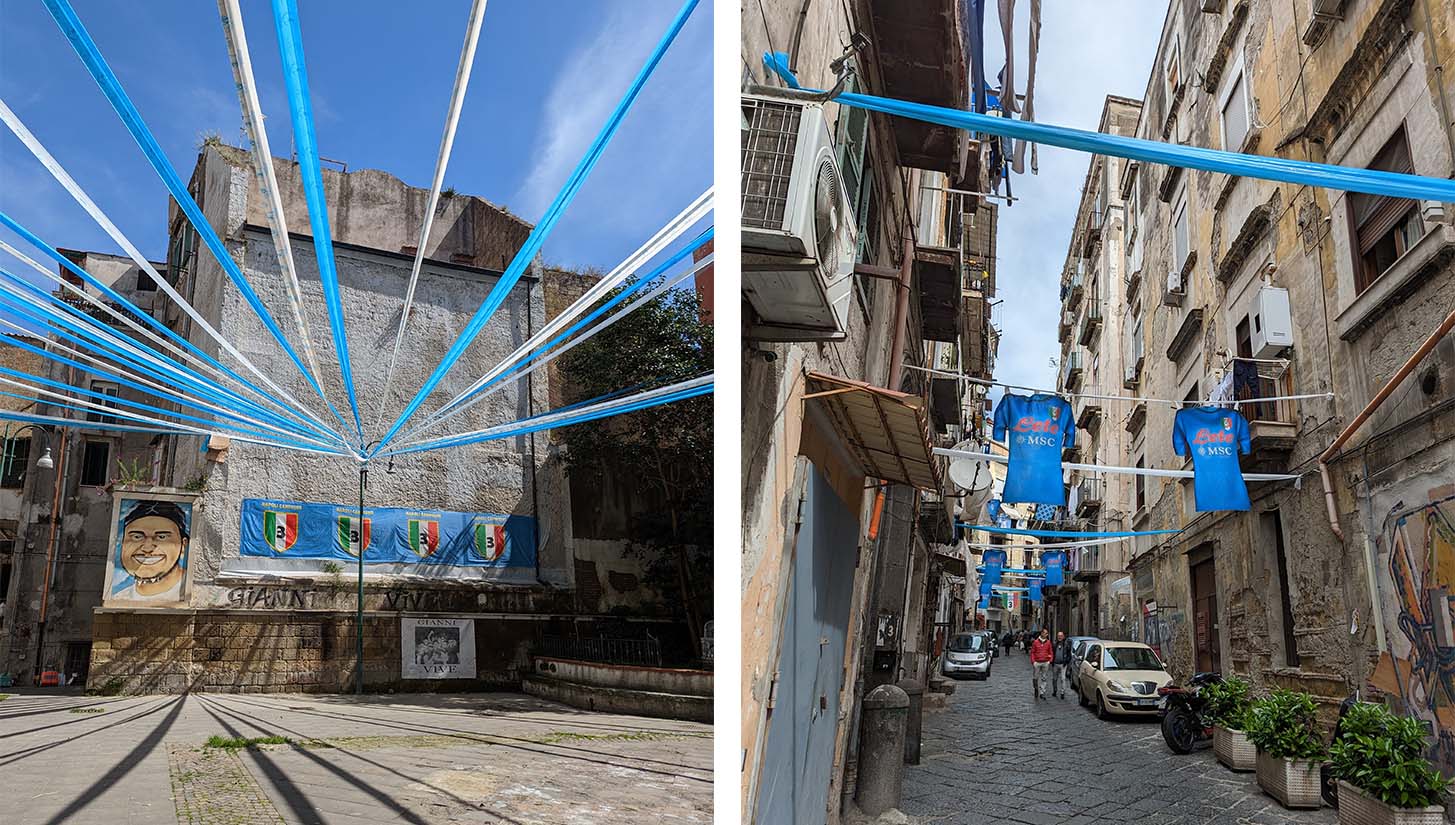
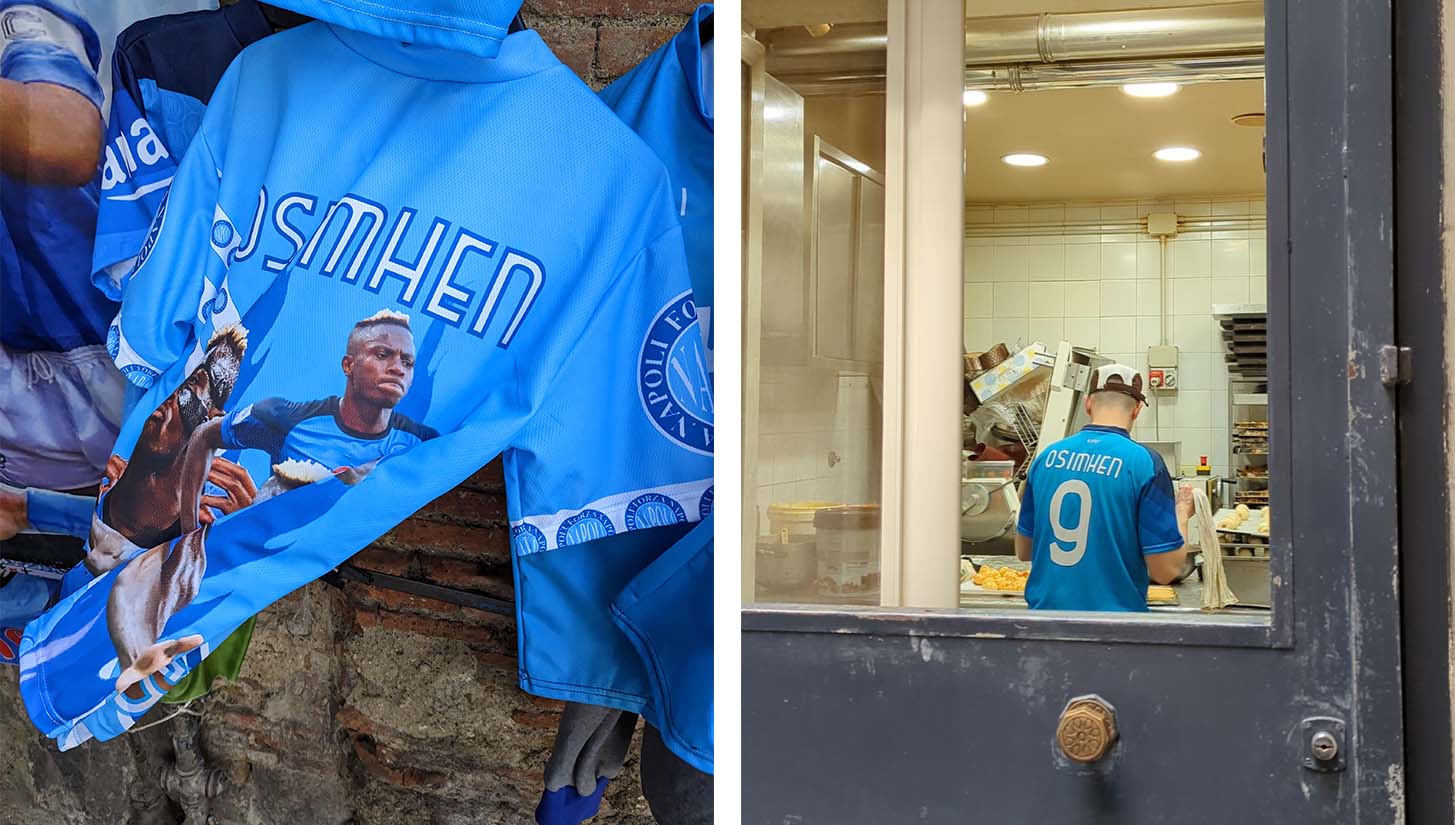
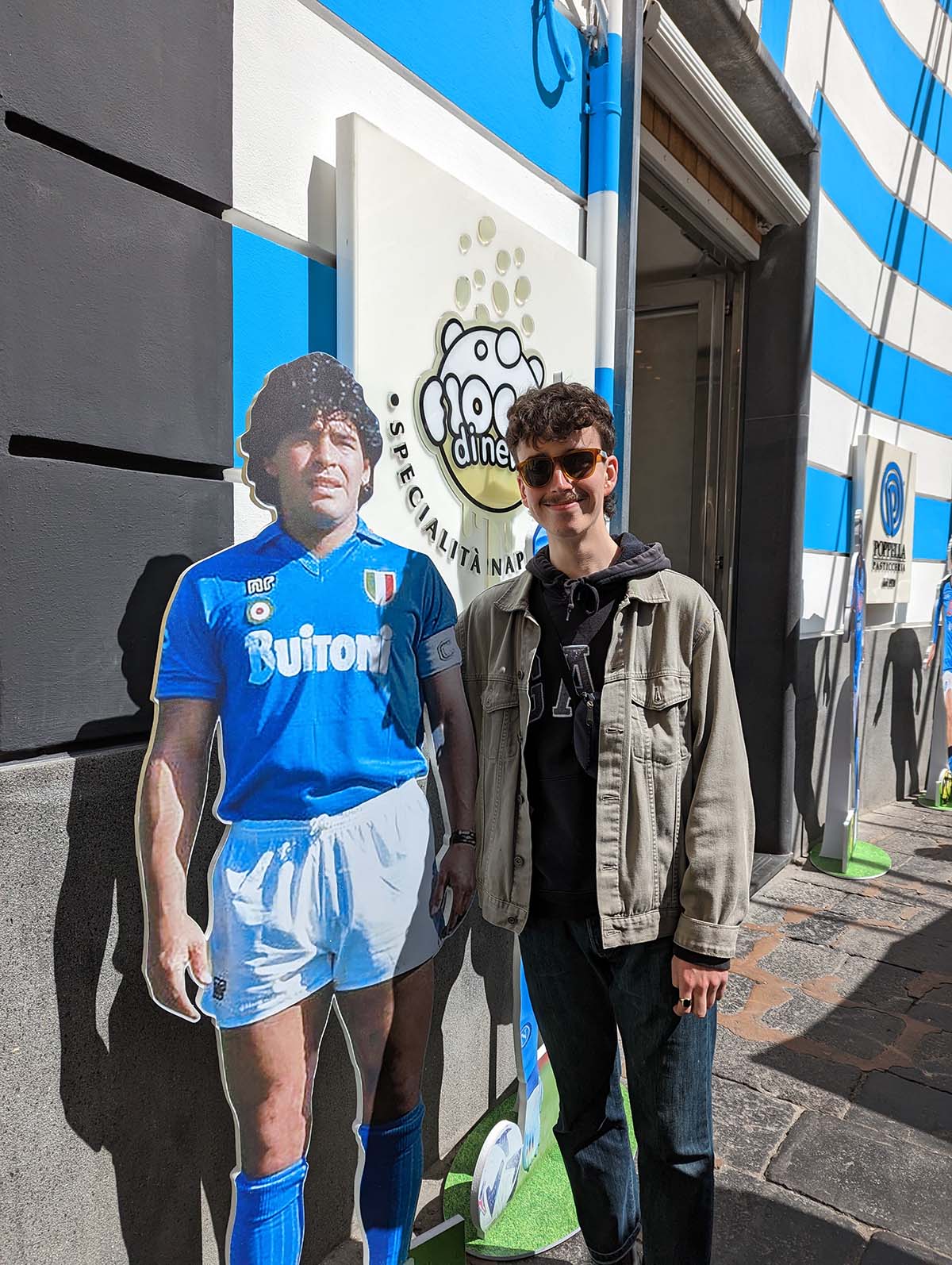
Sky blue and white bunting flutters above every street and alleyway, while photos and posters depicting Napoli’s new heroes cover walls, bakery windows, and shop interiors. Butchers, grocers, and fishmongers work under the watchful eyes of Victor Osimhen and Khvicha Kvaratskhelia. One famous Pasticceria even has life-size cardboard cut-outs of the players stood outside. You can’t move without seeing tricolor Scudetto shields plastered everywhere, complete with the number “3.”
Sat a few hundred yards from the main thoroughfare, three middle-aged men, animatedly talking football, watch another perform his own daily routine. The man, grey-haired and wrapped in a down jacket despite the mild April weather, sets out a stall of flags, scarves and bizarrely, giant blue Easter eggs beneath a recently unveiled mural of Maradona. El Pibe de Oro — the Golden Kid — looks on wearing the famous Mars-emblazoned shirt worn when Napoli won its last title. Beneath him is a giant Scudetto shield, topped by a nickname honoring his shirt number and God-like status: “D10S.”
Neapolitans are among the most superstitious football fans on earth, understandably so given three decades of rotten luck. But even the most pessimistic supporter is allowing their mind to wander. The official Scudetto celebration will take place in the giant Piazza del Plebiscito, the only part of the city save for the stadium where tens of thousands of people can all gather. But once the final ball has been kicked on June 4, there’s no telling how long the city-wide celebrations will last. From Fuorigrotta to Sanità, the party will be nonstop.
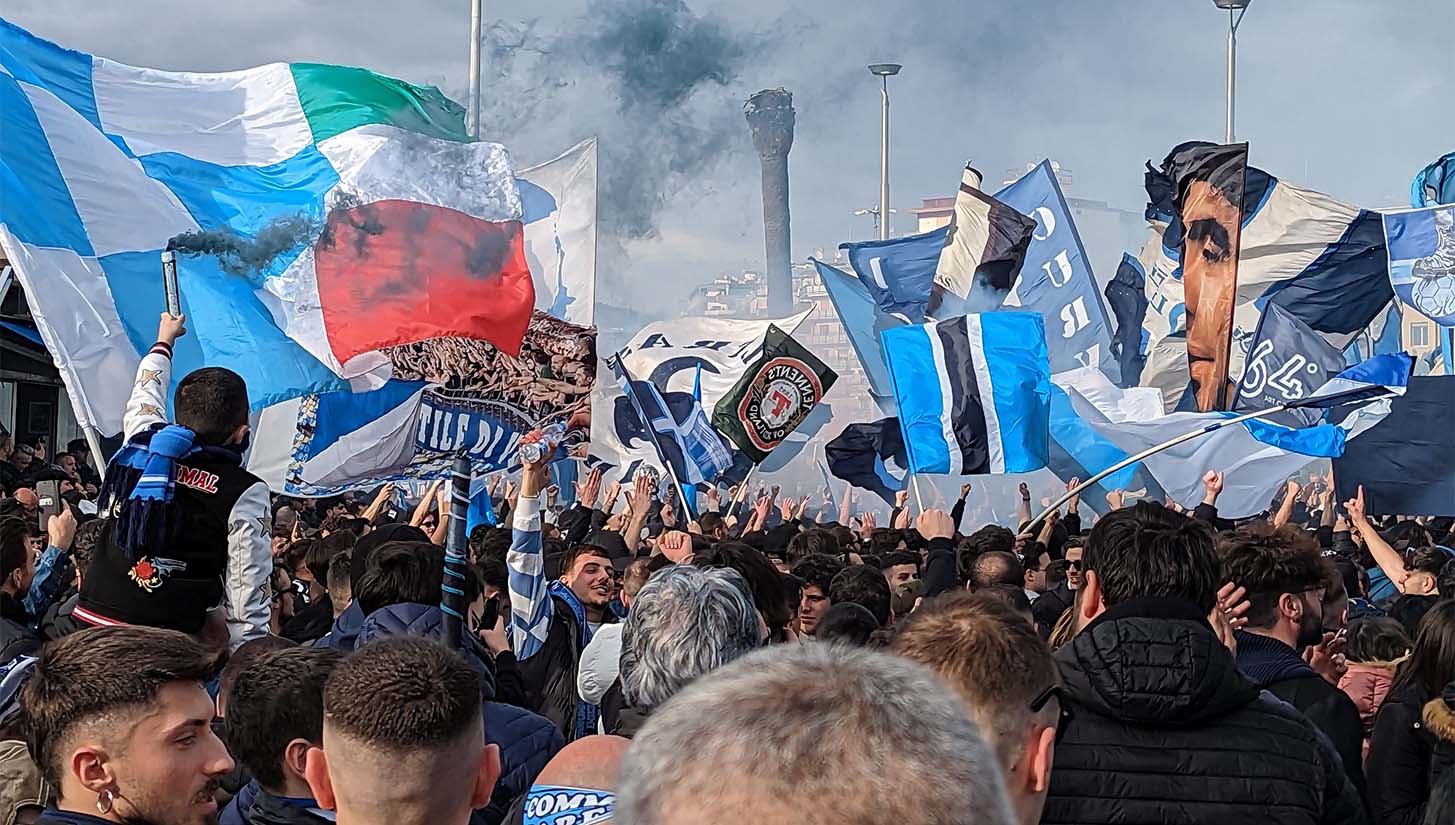
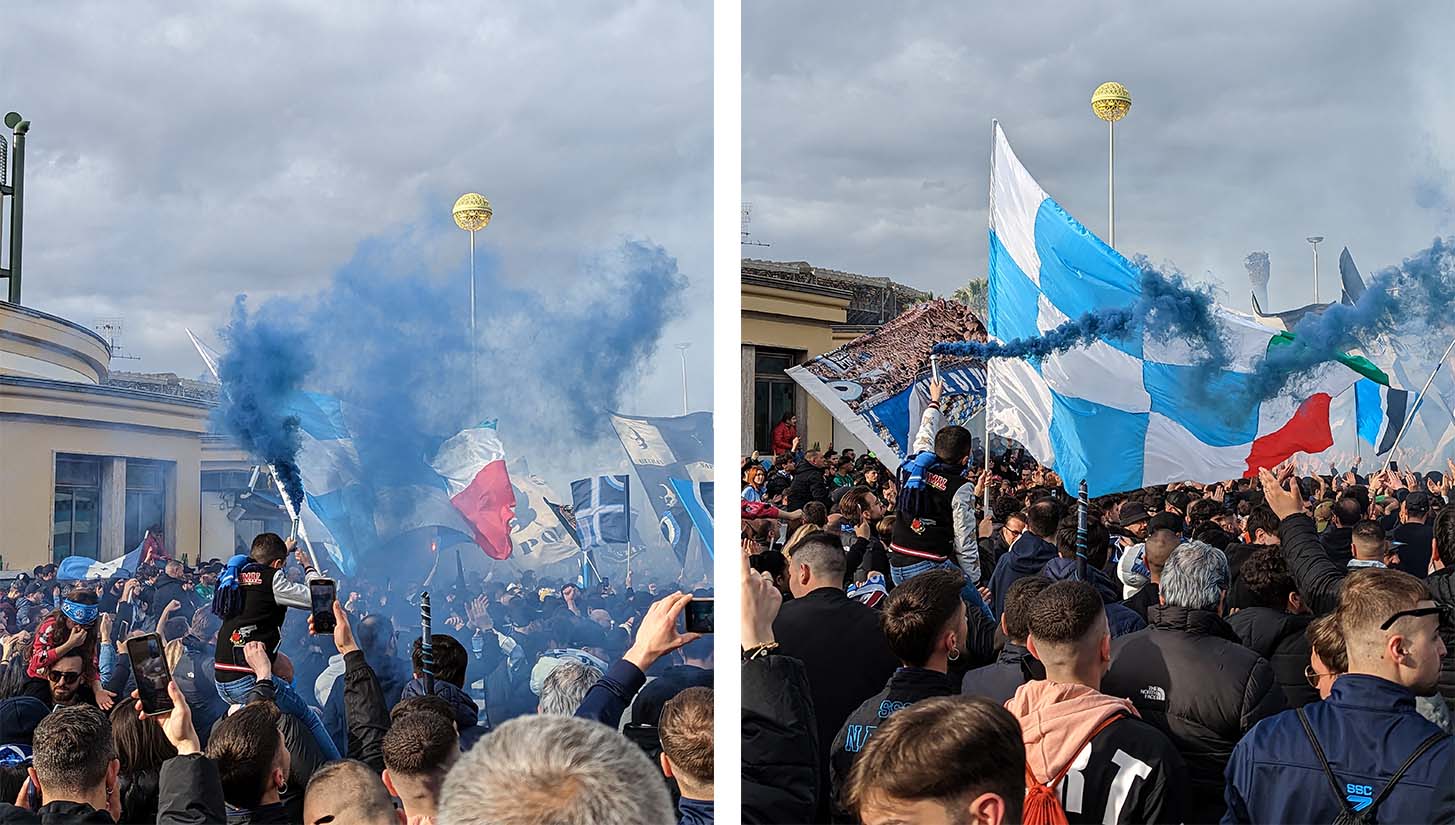
It may seem surprising then that just as Naples is getting ready for the party of the century, it’s also ready to revolt. While on the pitch the players have exceeded even the wildest of expectations, in the stands it has been a season of turmoil and conflict. The world of the ultras is a confusing and chaotic one, and this historic season has been no different.
Napoli’s various ultras groups and club president Aurelio De Laurentiis have never seen eye-to-eye, but things came to a head before the league meeting with AC Milan at the beginning of April. De Laurentiis has never hidden his desire to rid his club of ultras, the organized and often militant supporters’ groups Italian football is famous for. But for the film director, they don’t fit in with his image of a Premier League matchday, where families — more likely to spend money in and around the stadium — make up much of the crowd and obey all the rules.
When Napoli and Roma ultras made national headlines in January by fighting on the A1 highway, De Laurentiis took advantage. The main perpetrators, mainly from Napoli’s Curva A, were arrested and handed football banning orders, but De Laurentiis decided to tar all the ultras with the same brush.
In Italy fans must seek permission from their clubs on a game-by-game basis to take banners, pyrotechnics, flags, megaphones, and drums into stadiums. Few clubs enforce the rules, but all of sudden De Laurentiis decided to. It was like the time he started fining fans for not sitting in the correct seats, something that happens in curvas across Italy. Out of principle, the ultras stopped taking such items into the stadium, and when Napoli hiked ticket prices for both Serie A and Champions League matches, they’d had enough.
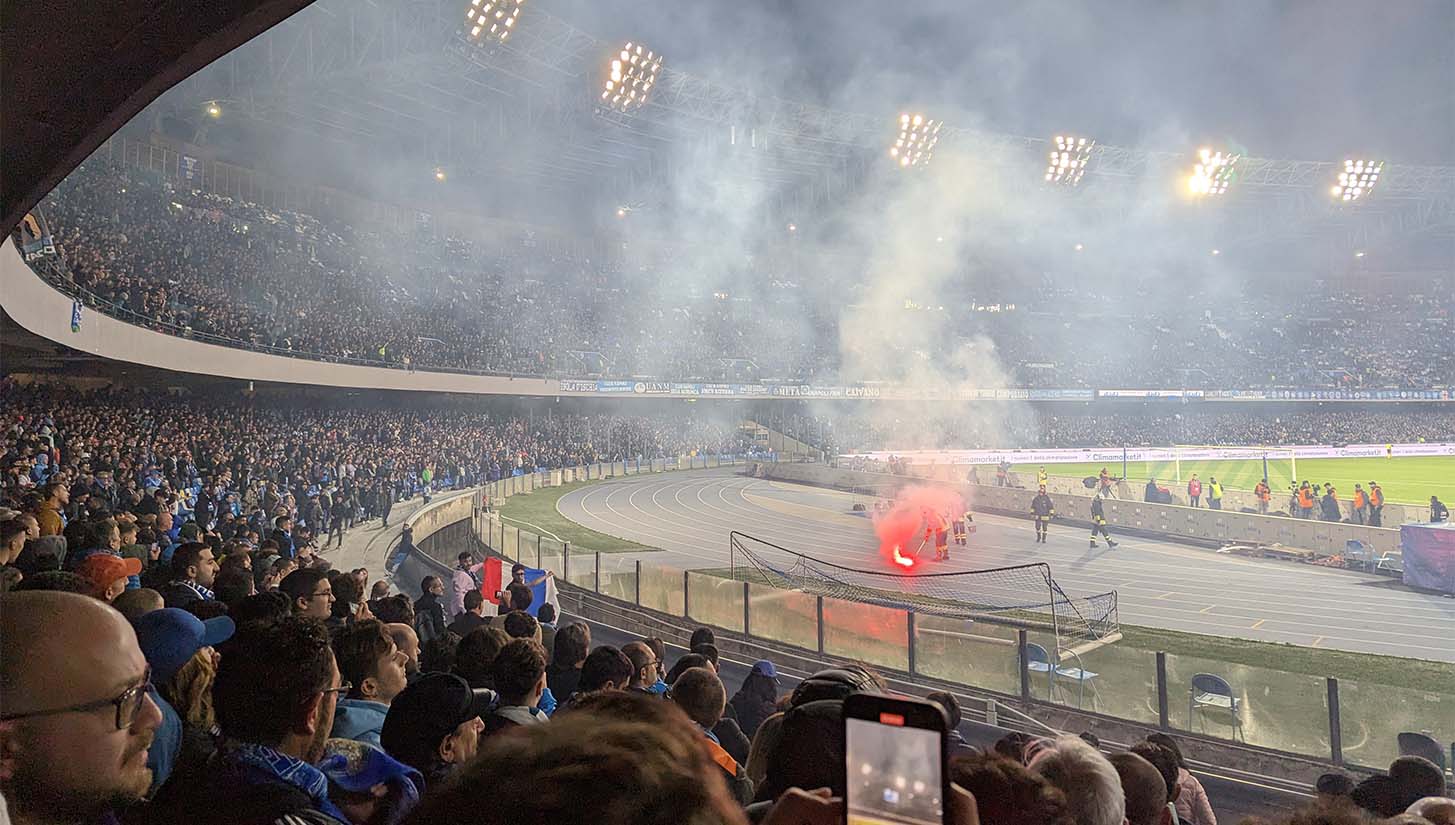
The ultra groups released a joint statement saying they would remain silent during the 0-4 league defeat to AC Milan on April 2, and instead take their famous atmosphere outside the stadium during the build up to kickoff. Clapping hands, flares, and the sound of explosions filled the air in Piazza Tecchio, and when the match began, an eerie silence fell. Scuffles broke out in Curva B between members of different groups disagreeing about how to protest, and red flares rained onto the running track. After the match, De Laurentiis stoked the flames further.
“They are not real fans,” he said of the ultras. “They are delinquents who are allowed to go to the stadium and mortify those who really support the team with incidents that are in front of everyone’s eyes.”
Over in the away end, the Milan fans lit their flares and waved their flags like they were at San Siro. That’s how the Maradona used to be, and hopefully, it will be like that again. Recognizing the importance of this season and the role the ultras play in supporting the team, the two parties have come to a — temporary at least — truce.
On Saturday, the president met with leaders of several ultras groups at a peace summit backed by the mayor, prefect, and police commissioner of Naples. The ultras reportedly agreed to respect the rules regarding drums and banners, while De Laurentiis relaxed on certain rules regarding club memberships.
A statement from representatives of the ultras read: “Just as De Laurentiis recognized the importance of our sacrifices, our passion, our love for the team and the impact of our support in the results on the field, we have recognized his management has led Napoli, finally, to the Olympus of great football. This Napoli is the pride of our city.”
Drums, flags, and singing returned for the goalless draw with Hellas Verona, and the San Paolo was once again a cauldron of noise and color during the second leg of the Champions League quarterfinal against Milan. Napoli were eliminated after a 1-1 draw, but the difference in the raucous atmosphere that night and the silence 16 days prior was night and day.
Despite the turmoil in the stands and recent on-field struggles, Naples is living a historic moment, one it has waited over 30 years for. Napoli’s journey to this moment has been the stuff of fairytales, but as the saying goes, all is not perfect in paradise. It likely never will be, but if the peace can hold until the end of the season, then Neapolitans might have a new saint or two to worship.

















